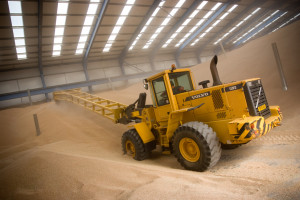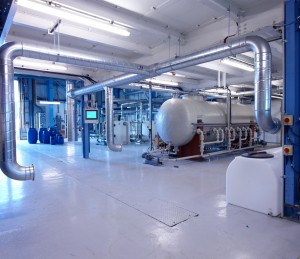International and national context
Climate change is a reality. In the UK, temperatures on land have risen by as much as 1°C since 1980 and coastal sea surface temperatures by roughly 7°C over a similar period. Sea level around the UK has risen by 10cm since 1990 and the UK has experienced eight of the ten warmest years on record over the same period. These trends are projected to continue, although at what rate and by how much primarily depends on the volume of greenhouse gases released into the atmosphere around the globe.
The Stern Review (2006) examined evidence on the economic impacts of climate change. It recommended that early action on climate change is required as ignoring climate change will damage economic growth. The benefits of strong and early action would considerably outweigh the costs. Additionally, given that climate change is happening, the provision of measures to help people adapt to it are essential.
Inter-Agency Climate Change Forum (2010)
“Climate change affects biodiversity in many ways. Impacts on species include changes in distribution and abundance, the timing of seasonal events and habitat use and, as a consequence, there are likely to be changes in the composition of plant and animal communities. Habitats and ecosystems are also likely to change character by, for example, showing altered water regimes, increased rates of decomposition in bogs and higher growth rates in forests. Biodiversity also has an important role in climate change adaptation and mitigation. For example, soils, forests and oceans hold vast stores of carbon. The way managed habitats are used will affect how much of that carbon is released in gaseous form into the atmosphere. How we address climate change and maintain healthy ecosystems so that they provide ecosystem goods and services essential for human well-being is now a key challenge for society. Understanding the ongoing impacts of climate change on ecosystems is an essential prerequisite to addressing this challenge.”
In the Tees Valley
The North East Climate change Adaptation Study (2008) identified potential future climate change impacts in the Tees Valley affecting local industry, urban areas, transport and services. The low-lying nature of much of the Tees Valley means it is susceptible to direct climate change impacts such as rising sea levels and flooding, which will impact homes, businesses and the coastal and wetland habitats of the Teesmouth and North Tees marshes.
Climate change issues are challenging but also offer new opportunities. The Tees Valley is home to key manufacturing industries and large employers that are fundamentally important to UK advanced manufacturing, but are high CO2 emitters. Such firms and the employment they sustain are therefore vulnerable to requirements to reduce emissions. Developing renewable energy and low carbon industry, upgrading public transport systems and low carbon and resilient housing developments are clear priorities for the economic development of the Tees Valley. The Tees Valley Local Enterprise Partnership (Tees Valley Unlimited) is working to drive the transition from a high value, high carbon economy to a high value, low carbon economy, focused on renewable energy, new technologies, biological feedstocks and the reduction of the carbon footprint of our existing industries. The Tees Valley Climate Change Resilience Group (2012) carried out An assessment of the impact of climate change on the natural environment of the Tees Valley’. Impact of Climate Change on Natural Environment Final Report May 2012
Developing ecologically resilient and varied landscapes composed of ecological networks through habitat protection, restoration and creation is essential for the Tees Valley to maintain a rich natural environment in the future. The TVNP is developing a landscape scale approach to biodiversity through its Natural Network and Opportunity Mapping project. This will assist in the analysis to enable adaptation and mitigation measures into conservation management, planning and practice. In addition, biodiversity gains can be factored into climate change adaptation measures such as river restoration and flood storage schemes, coastal realignment and tree planting initiatives. The maximisation and creating of areas for flood attenuation can also create opportunities for biodiversity to adapt to climate change by improving wildlife corridors and habitats is a major component of creating a high quality local environment in the Tees Valley.



